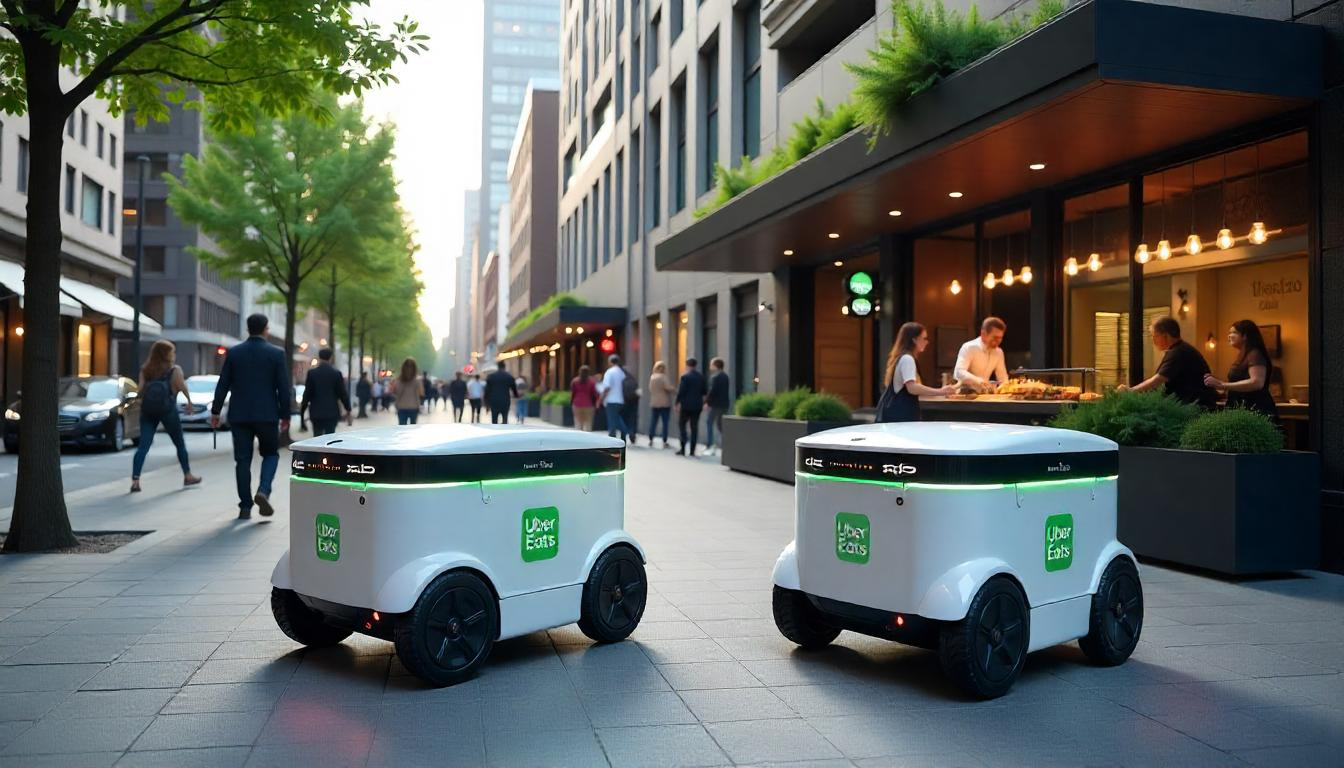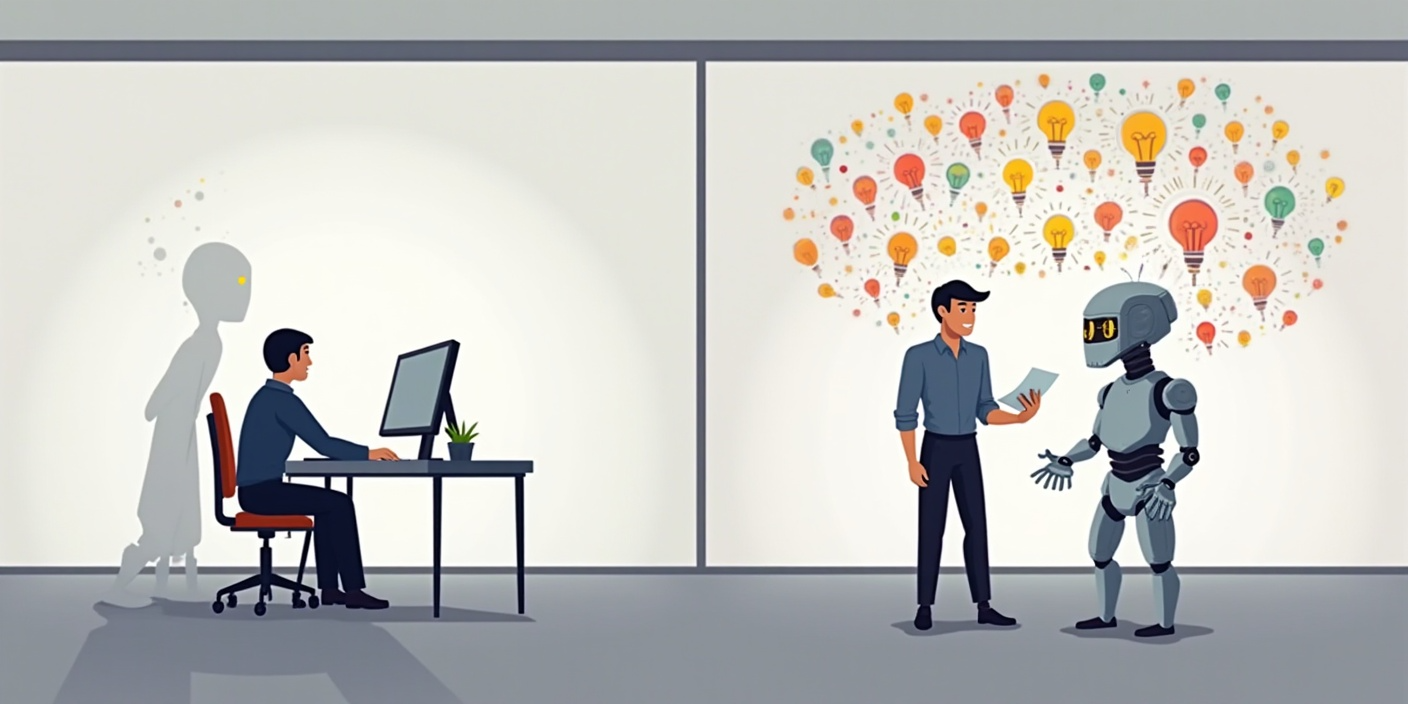Delivery Robots
Highlights
Top Insight
Companies should recognize the profound impact AI is having on human relationships and leverage this transformative potential. AI tools, such as chatbots and large language models, are being used for emotional support, conflict resolution, productivity, creativity, and personalized engagement. We might invest in AI that enhances emotional intelligence, offering personalized and empathetic interactions for customers and employees. We could capitalize on AI to bridge gaps in resource-constrained areas like mental health support and education. It is useful to encourage AI adoption for accelerating creative projects, improving communication, and fostering cross-cultural collaboration. We should prioritize AI as a tool to deepen relationships, empower users, and drive innovation across industries.
Top News
1. Adobe launched the Firefly Video Model, a video model that is IP-friendly and commercially safe.
2. ByteDance introduced Goku, an open-source AI model for image and video.
3. AI-generated voice clones are transforming communication for people with motor neuron diseases by restoring their voices.
4. DeepMind’s AlphaGeometry 2 has surpassed gold-medalist-level performance in solving International Mathematical Olympiad geometry problems.
5. Avride has launched autonomous sidewalk delivery robots for Uber Eats.
Innovation Insights
1. The AI relationship revolution is already here (MIT Technology Review)
AI is profoundly transforming relationships and personal dynamics, providing support, guidance, and even companionship in ways never imagined. From mental health tools that help overwhelmed individuals feel heard, to creative outlets such as AI-assisted podcast creation amid wartime chaos, people are discovering how AI enhances their emotional and creative lives. It serves practical roles as well, like using AI to mediate marital conflicts and improve parenting, or creating bedtime stories for children. Beyond functionality, it even reshapes intimacy and self-discovery. While AI’s potential for connection is immense, individuals continue to grapple with its limitations, recognizing its role as a powerful tool but not a replacement for genuine human connection.
2. Big Tech is moving on from the DeepSeek shock (Financial Times)
The DeepSeek shock has accelerated a strategic shift in the AI industry, with Big Tech moving from a focus on model training to packaging AI technologies into more complete systems. This shift is driven by the commoditization of large language models and the diminishing returns of training ever-larger models, pushing companies like OpenAI to integrate technologies like reasoning into functional solutions. While this approach aims to defend profits and drive broader AI adoption, it creates opportunities for smaller players, such as DeepSeek, to fill gaps at the bottom of the market with open-source alternatives. Nvidia and other AI infrastructure suppliers are adapting to a more fragmented market with diverse workloads, where success depends on actual AI usage rather than massive upfront training costs. Overall, the DeepSeek breakthrough has amplified pressure on the AI industry to deliver tangible value and accelerate commercialization, creating both challenges and opportunities for incumbents and challengers alike.
3. Precedents Thinking (Harvard Business Review)
The concept of “precedents thinking” emphasizes innovation through creative combinations of existing ideas rather than inventing something entirely new. This method involves three steps: framing the problem with clarity and neutrality, searching for past innovations relevant to each aspect of the problem, and combining elements from these precedents to develop breakthrough solutions. Examples like Henry Ford’s assembly line, Netflix’s subscription model, and DoorDash’s shared delivery network highlight the power of this approach. By drawing inspiration from diverse fields, individuals and organizations can reduce risk and generate transformative ideas. This iterative, evidence-backed process has been successfully applied by startups and corporations alike to address complex challenges and unlock significant value.
4. Ideas “Physics and Chemistry” with GenAI (Gianni Giacomelli)
The article explores how AI can enhance idea generation by fostering collisions between concepts, enabling innovation through emergent interactions at scale. Ideas are analyzed as composites of “why” (purpose), “what” (category), and “how” (execution), which can be mapped in knowledge graphs to understand and refine their structure. Collisions between idea subcomponents generate derivative ideas, while a “hardening” process strengthens ideas through critique and iterative refinement. AI amplifies this ecosystem by analyzing vast datasets and generalizing concepts across domains, creating a symbiotic interplay with human creativity. This “idea physics and chemistry” framework envisions innovation ecosystems where human-machine networks drive continuous, scalable problem-solving and value creation.
5. HumanAIzation: The Art of Embracing AI to Become More Human (California Management Review)
While AI promises economic benefits such as increased efficiency and global GDP growth, it also raises concerns about income inequality, job displacement, and the undervaluation of human qualities like empathy and creativity. To address these challenges, organizations must adopt a human-centric approach, using AI as a partner to enhance emotional intelligence, adaptability, and personal growth rather than as a replacement for human labor. This shift requires rethinking organizational structures, investing in lifelong learning, and fostering leadership that prioritizes human development alongside technological progress. Ultimately, the article envisions a future where AI amplifies humanity’s potential, enabling individuals and organizations to thrive by focusing on deeper connection, creativity, and meaningful engagement.
6. The danger of relying on OpenAI’s Deep Research (The Economist)
OpenAI’s “Deep Research” is a powerful AI tool capable of producing in-depth research papers quickly, making it a valuable assistant for academics and professionals. However, it has significant limitations, such as a lack of primary research abilities, reliance on widely available data (favoring consensus views over niche insights), and struggles with complex, creative data questions. Critics warn that over-reliance on the tool could reduce intellectual engagement, as research and writing are essential components of critical thinking. While the tool shows promise, it is not ready to replace human research assistants entirely and must be used thoughtfully to avoid intellectual shortcuts.
AI Innovations
1. Language Models
Perplexity’s new Sonar model, built on Llama 3.3 70B and optimized for speed, factuality, and readability, delivers near-instant, high-quality answers, outperforming competitors like GPT-4o mini and Claude 3.5 Haiku, and rivaling top-tier models at a fraction of the cost and 10x the speed (Perplexity).
OpenAI CEO Sam Altman announced plans to simplify AI offerings by unifying models with the launch of GPT-4.5 and GPT-5, promising a more intuitive and versatile system while addressing competition and reassessing the company’s stance on open-source AI (Fortune).
2. Video and Image
Adobe Firefly, with the addition of Firefly Video Model, enables IP-friendly creation of high-quality videos, images, and audio with unprecedented creative control, offering seamless integration into Adobe Creative Cloud applications while ensuring ethical and transparent AI use for professional creators (Adobe).
ByteDance’s launch of Goku, an open-source AI model for generating high-quality visuals, underscores rising global competition in AI, emphasizing the need for businesses to prioritize AI literacy, practical applications, and responsible use amidst challenges like misinformation and deepfakes (Forbes).
YouTube Shorts has introduced Veo 2, an advanced AI video generation model, enabling creators to generate realistic, customizable video clips and backgrounds using text prompts, enhancing creative possibilities with faster, high-quality outputs (YouTube).
3. Voice clone
AI-generated voice clones are transforming communication for people with motor neuron diseases by restoring their voices, enhancing their ability to connect socially and emotionally, and even enabling creative pursuits like performing comedy, despite limitations in conversational practicality and emotional expression (MIT Technology Review).
Zyphra’s open-source Zonos-v0.1 model generates natural-sounding speech, supports voice cloning with seconds of audio, and offers multilingual, customizable features for text-to-speech applications, accessible via a Gradio interface, Docker installation, or API (The Decoder).
4. Math and Science
DeepMind’s AI system AlphaGeometry 2 has surpassed gold-medalist-level performance in solving International Mathematical Olympiad geometry problems, achieving 84% accuracy and marking a significant leap in AI problem-solving capabilities (Nature).
DeepScaleR-1.5B-Preview is a fine-tuned language model utilizing distributed reinforcement learning to achieve state-of-the-art performance on mathematical reasoning tasks with long context lengths, significantly improving accuracy while remaining efficient and accessible under an open MIT license (Hugging Face).
Google’s new Policy Framework for Building the Future of Science with AI outlines actionable steps for policymakers to accelerate scientific progress by investing in AI infrastructure, fostering innovation, and implementing pro-science legal frameworks to unlock AI’s transformative potential in research and discovery (Google).
5. Labor Market
The Anthropic Economic Index provides insights into AI’s impact on labor markets, showing that AI is primarily used for task augmentation in mid-to-high wage roles like software development and writing, while emphasizing open data and ongoing research to track its evolving effects on the economy and employment (Anthropic).
6. Agent
Glean has introduced Glean Agents, a platform empowering enterprises to build AI agents with broad access to enterprise and real-time internet data, enabling task automation, complex workflow management, and data-driven decision-making while ensuring robust security and governance (Business Wire).
Other Innovations
1. Cancer detection
Researchers have developed a low-cost blood test using nanosensors to detect pancreatic cancer early, with 73% accuracy, potentially improving survival rates and offering a promising tool for routine screening (Nature).
2. Robotics
Paleo-inspired robotics uses advanced technology to build robotic models of extinct animals, enabling scientists to study their movements, behaviors, and adaptations in real-world environments, offering new insights into evolutionary history while bridging the gap left by limited fossil evidence and biological knowledge (MIT Technology Review).
Avride has launched autonomous sidewalk delivery robots in Jersey City for Uber Eats, expanding their partnership to offer robotic meal deliveries within a one-mile radius, despite weather challenges, while continuing to grow their footprint in autonomous vehicles and campus deliveries (TechCrunch).
3. Navigation
Anello Photonics and OSCP have introduced miniaturized gyroscope-on-a-chip systems offering precise navigation independent of GPS, making them ideal for applications like autonomous vehicles, maritime navigation, and GPS-denied environments while overcoming traditional limitations of size, power, and accuracy (IEEE Spectrum).
4. Brain-computer interface
Neuralink’s brain-computer interface, the Link, has enabled three individuals with paralysis to regain autonomy by controlling digital devices and assistive tools with their thoughts, enhancing their independence and quality of life through groundbreaking applications like communication, creative design, and real-world navigation (Neuralink).







